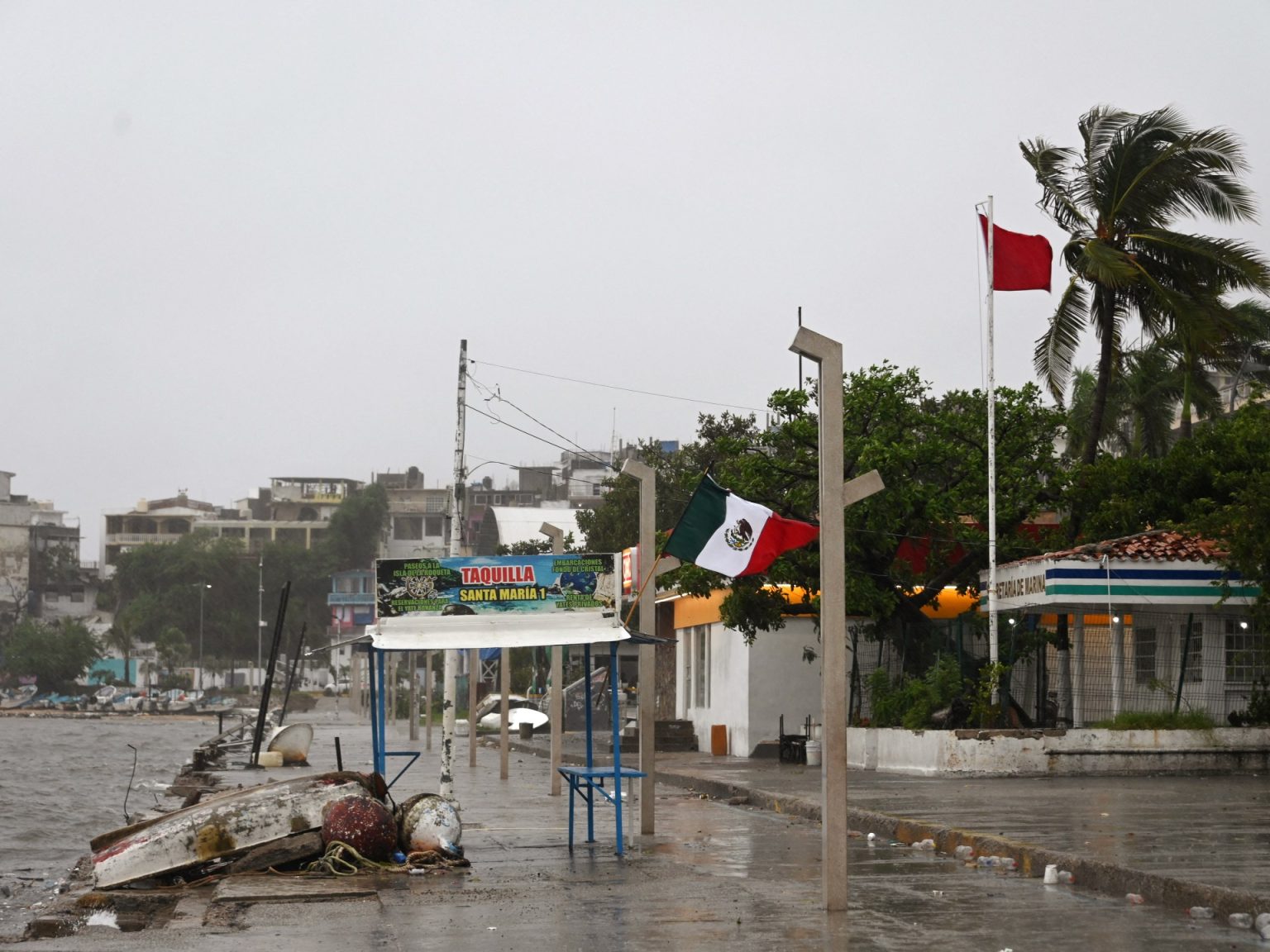Hurricane John recently struck Mexico’s southern Pacific coast, hitting the region where Hurricane Otis had caused significant devastation the year prior. John rapidly intensified from a tropical storm to a major hurricane, catching authorities off guard as they worked to provide updated guidance and warnings to residents. The hurricane made landfall as a Category 3 hurricane near the town of Punta Maldonado in Guerrero, unleashing fierce winds and heavy rainfall before weakening as it moved inland. The US National Hurricane Center warned of life-threatening storm surges and flash floods already impacting the region.
The rapid intensification of Hurricane John is believed to be linked to warmer ocean temperatures providing fuel to the storm, a phenomenon that has become increasingly common in recent times according to experts. This unexpected surge in strength has become a concern for scientists, authorities, and residents, as they face more frequent and stronger storms. Meanwhile, another potential hurricane was developing on Mexico’s Gulf coast, causing tension in Oaxaca’s coastal cities as residents prepared for potential evacuations and shelters. Classes were suspended in multiple coastal zones, and state governments took preemptive measures to ensure the safety of residents.
In response to the looming threat of Hurricane John, Mexico’s federal coordinator of civil protection urged residents in coastal cities to evacuate and seek shelter in order to protect themselves and their families. Authorities were on high alert, with preparations in place to address the emergency and respond to any potential damage caused by the storm. The government of President Andres Manuel Lopez Obrador faced criticism for its slow response to Hurricane Otis, but has pledged to improve its early warning systems and increase speed in emergency responses in the future.
Hurricane John’s impact on the region is reminiscent of the devastation caused by Hurricane Otis the year before, which left Acapulco in ruins and claimed the lives of at least 47 people. The rapid intensification of Otis had caught residents off guard, resulting in widespread power outages, loss of life, and a state of lawlessness as families searched for their loved ones. The aftermath of Otis left much of Acapulco in disarray, with residents scrambling for basic necessities like food and water. With the memory of Otis still fresh, authorities and residents are on high alert for Hurricane John’s potential impact and are taking necessary precautions to ensure safety.
As Hurricane John made landfall in Mexico, authorities expressed concerns about the storm potentially slowing down once it hits land, causing prolonged damage to the coastal areas. Meteorologists warned that the impacts of the storm could be felt for weeks to months, emphasizing the need for continued vigilance and preparedness. The Mexican government, under the leadership of President-elect Claudia Sheinbaum, has pledged to improve early warning systems and emergency response protocols to better handle such natural disasters in the future. As residents brace for the impact of Hurricane John, there is hope that lessons learned from previous disasters will help mitigate the potential damage and ensure the safety of those in the storm’s path.


